Medium Panther and heavy T-4. About the German designations of technology
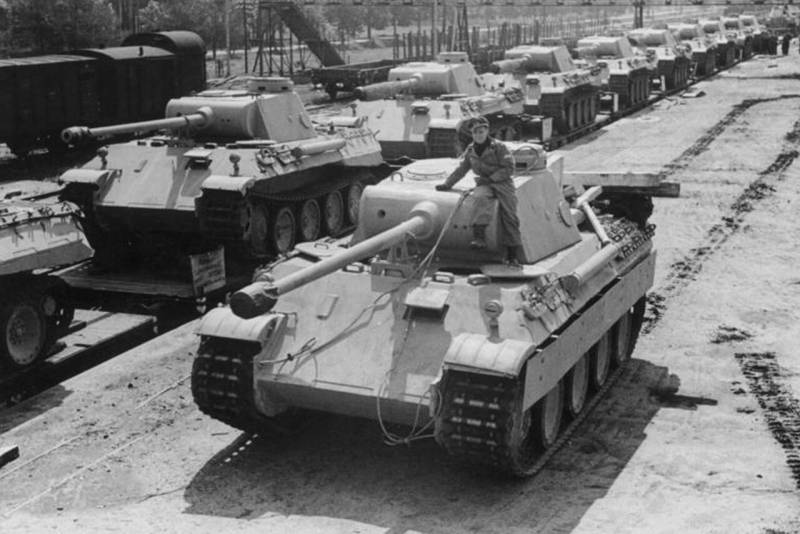
Is it true that during the Second World War the Germans classified Tanks gun caliber? Did they consider the Pz.Kpfw.IV a heavy tank, and the Panther a medium one? It would seem that many photographs of the original documents are available, and the Panzer Tracts book series contains entire lists of designations with dates. However, people still repeat the old misconceptions, which is clearly seen in the discussions on the Internet. Some are trying to adapt the Soviet approach to classification, while others invent a classification for the Germans on the go. What unites these misconceptions is the lack of reliance on original documents, on how the Germans themselves called their equipment.
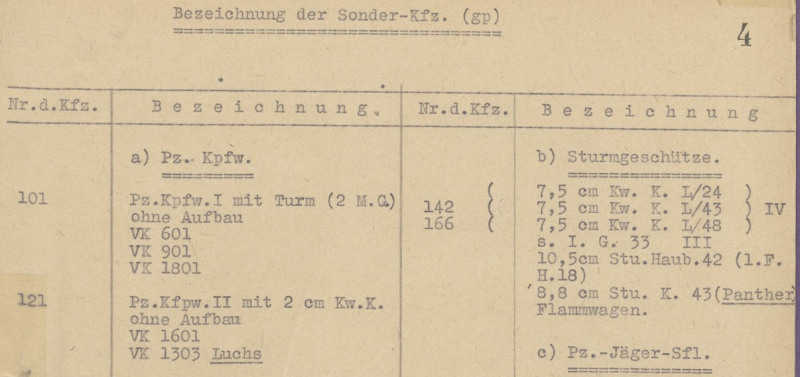
In this article, we will consider the German approach to the designations of armored vehicles, tanks and self-propelled guns. All examples are taken from photographs of documents and books in the Panzer Tracts series, which are based only on primary sources. Core content provided by Harold Biondo, Alexander Sotnikov and members of the Panzer Fakten Facebook group* (Meta Platforms, Inc., its Instagram and Facebook products are banned in the Russian Federation).
Looking for classes
Many German designations of technology can be roughly divided into two types. Short designations like Sturmpanzer or Tiger H1 were like proper names, usually used by the troops. Long symbols served for description. For example, Jagdpanzer IV is a leichter Panzerjäger auf Fgst.Pz.Kpf.Wg.IV mit 7.5 cm Pak 39 L/48, i.e. a light tank destroyer on a Pz.Kpfw.IV chassis with a 75 mm Pak 39 L/48 gun. We are interested in just such detailed notation with the words easy (light), average (mittler) and heavy (difficult).
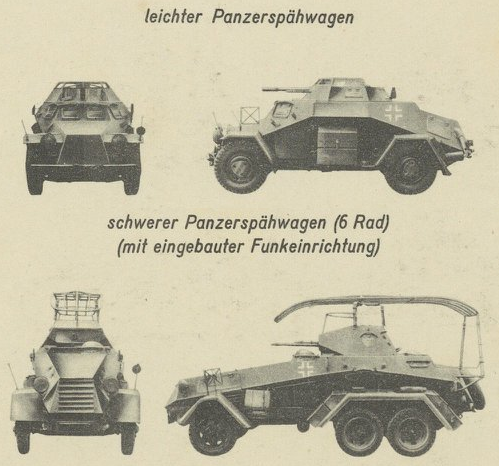
Light and heavy reconnaissance armored vehicles. From the determinant of 1940. Source: Panzer Fakten
Let's start with reconnaissance armored vehicles (Panzerspähwagen). The Germans divided them into light and heavy. The four-wheeled Sd.Kfz.221 was light (Leichter Panzerspähwagen), six- and eight-wheeled Sd.Kfz.231 - heavy (Schwerer Panzerspähwagen). In general, the Germans sometimes resorted to dividing only into two classes - light and heavy. Therefore, before arguing whether the Pz.Kpfw.IV was considered a medium tank, it was worth clarifying whether the Germans had medium tanks at all. But let's not get ahead of ourselves.
Line of half-track tractors (Zugkraftwagen) was divided into light, medium and heavy vehicles. Tractors for 1 and 3 tons were called light, for 5 and 8 tons - medium, and for 12 and 18 tons - heavy. The half-track armored personnel carriers created on their basis were light (leichter Schützenpanzerwagen Sd.Kfz.250) and average (mittlerer Schützenpanzerwagen Sd.Kfz.251).
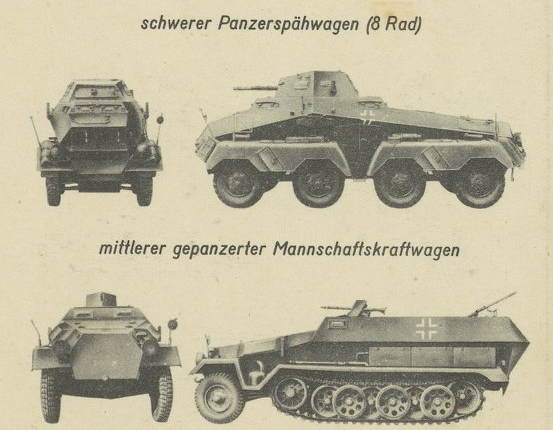
Heavy eight-wheeled armored car and medium half-track armored personnel carrier. From the determinant of 1940. Source: Panzer Fakten
The devil will break his leg
Dealing with armored vehicles was quite simple, which cannot be said about self-propelled guns. German self-propelled guns received especially verbose names, in addition, many vehicles were renamed, and more than once.
After the success of the StuG III, the Germans decided to create a whole line of assault guns (Sturmgeschütze) on chassis of different types. Initially, they were called light and heavy assault guns and were supposed to be subordinate to the infantry. However, General Guderian wanted to replace the obsolete Marder tank destroyers, so under his influence, the assault guns were renamed tank destroyers. For example, leichtes Sturmgeschütz 38(t) was leichter Panzerjager auf 38(t), and later a short notation appeared Jagdpanzer 38.
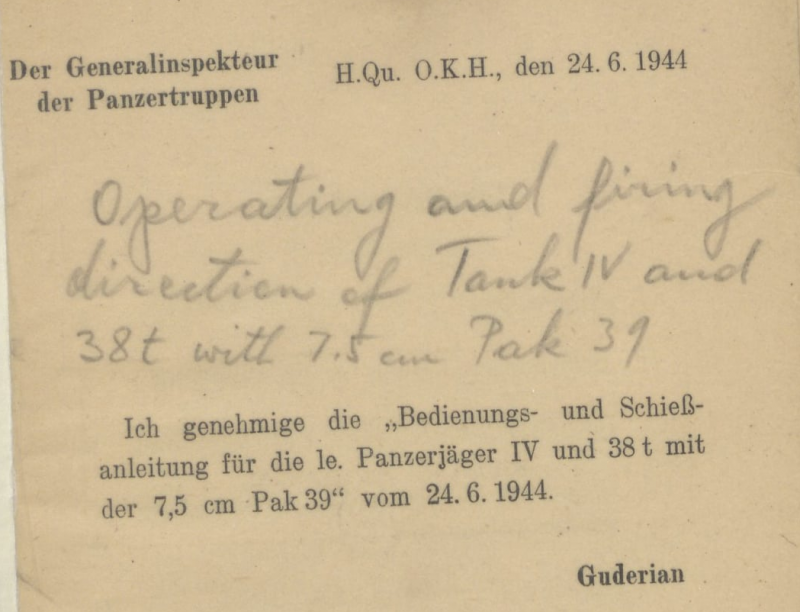
Light tank destroyers IV and 38(t) - General Guderian approves! From the manual of 1944. Source: Panzer Fakten
Other cars had a similar path:
*Sturmgeschütz neuer Art → leichter Panzerjager IV → Jagdpanzer IV
*schweres Sturmgeschütz auf Fgst.Panther → schwerer Panzerjäger auf Fgst.Panther → Jagdpanther
*schweres StuG mit 12.8 cm Kanone → schwerer Panzerjager auf Fgst.Tiger II → Jagdtiger
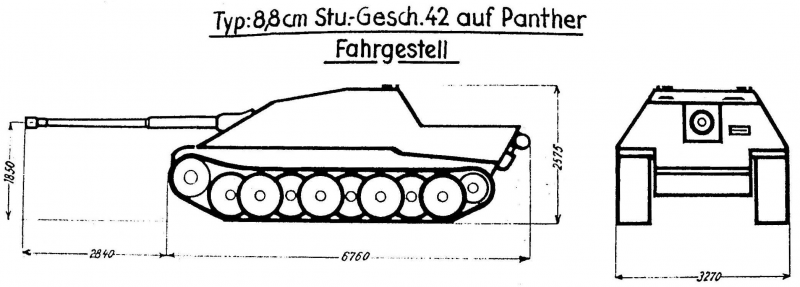
An early sketch of an 88mm assault gun - the future Jagdpanther. Pay attention to the silencer - it was abandoned on serial Panthers. Source: Panzer Tracts
It must be said that the Germans freely treated the names of self-propelled guns. Sometimes they didn't mention the weight class at all in the long descriptive notation. Moreover, the old names continued to be used along with the new ones. For example, the drawings of 1944 with the modernization of the Jagdpanzer IV on a six-wheeled chassis have been preserved. They are signed as Sturmgeschütz Auf Pz.IV. But the StuG III, following its counterparts, did not receive the designation of the weight class.
Open-cabin tank destroyers such as the Panzerjäger I, Marder II and Nashorn were not classified by weight at all. Self-propelled howitzers also did not have their own classification, however, the howitzers themselves were called light or heavy. Gun carriers (Waffentrager) were not originally classified. Later, the Germans came to the division into light and medium gun carriers. Preserved drawing Mittlerer Waffenträger SFH18/Panther - a medium carrier of a 150-mm heavy howitzer based on the Panther. Please note that the tank destroyer Jadgpanther on the same chassis was classified as heavy. The Waffenträger based on the Pz.Kpfw.III/IV was also called medium, although the tank destroyer leichter Panzerjager III/IV belonged to the lungs.
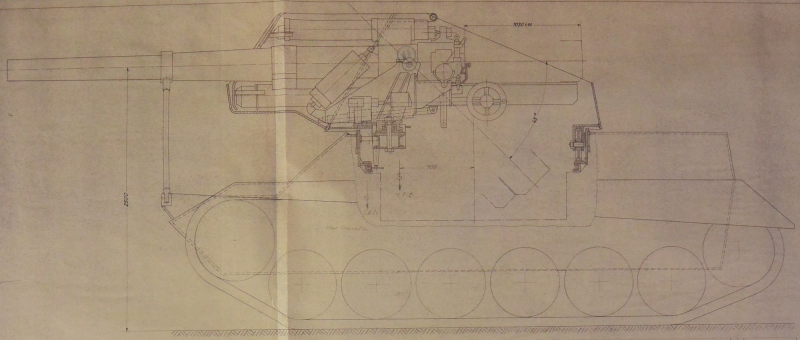
Medium gun carrier on a Pz.Kpfw.III/IV chassis weighing 28 tons. Note the 150 mm gun in the open turret. Source: BAMA
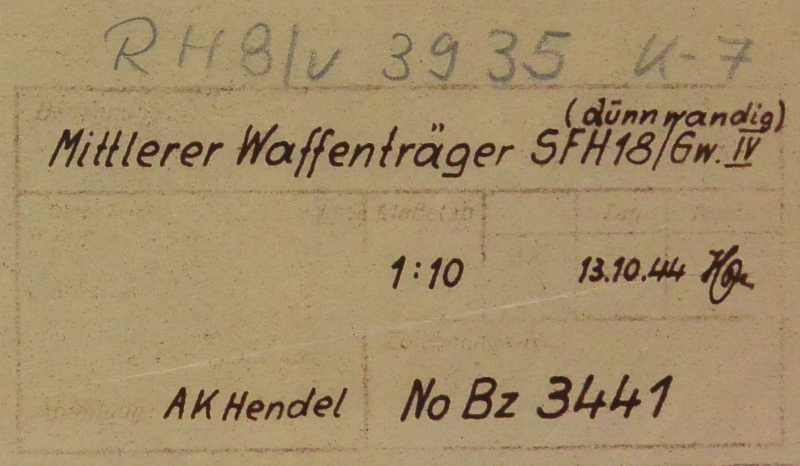
Stamp of the same drawing close-up. Although the chassis is called Gw.IV here, it only has the engine and cooling system from the Pz.Kpfw.IV. The transmission was taken from the Pz.Kpfw.III, the undercarriage and hull are completely new. However, the Germans sometimes referred to the Pz.Kpfw.III/IV as Pz.Kpfw.IV. Source: BAMA
In total, for each self-propelled gun in the Panzer Tracts series, you can find entire lists of designations. The Germans themselves were clearly not bothered by them: why remember one of the old designations, if you can always come up with a new one?
Not by mass and not by gun
Usually, conversations about the classes of German tanks come down to a dispute about how the Germans divided tanks into light, medium and heavy: by weight or by gun caliber? Let's supplement this question: did the Germans have a division of tanks by weight? And if so, which one - light/heavy or light/medium/heavy? An analysis of original documents and reliable secondary sources gives an unexpected answer: with rare exceptions, the Germans did not have any division into light, medium and heavy tanks at all. Therefore, talking about how the Germans classified their tanks, by mass or by caliber, does not make sense.
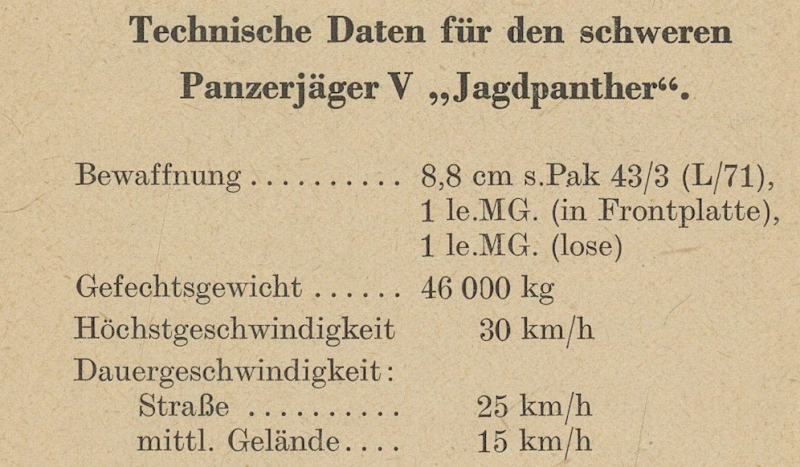
Technical characteristics of the heavy tank destroyer Jagdpanther. Source: Panzer Fakten
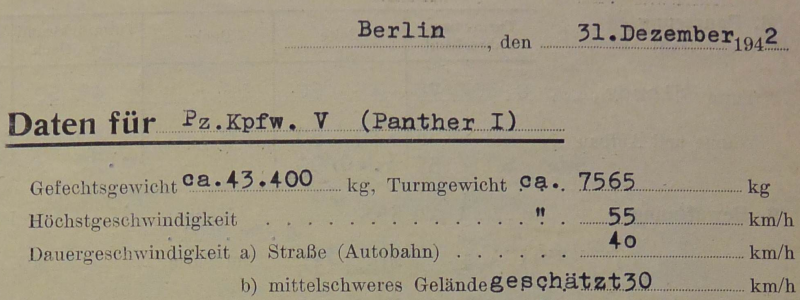
For comparison, similar characteristics of the Panther tank. That is how, without a weight class, the Germans usually called their tanks. Source: BAMA
The Germans began the revival of tank troops in secrecy, so at first they called tanks tractors and tractors. At first it was compact tractor и Grosstraktor – small and large tractors. The Kleintraktor was later renamed to Leichttraktor - light tractor. The unsuccessful Grosstraktor was abandoned, and the tank created to replace it was originally called mittlerer tractor - medium tractor. If the Germans continued to develop such designations, then they could well come to their classification by weight. However, the "agricultural" Wehrmacht soon ended.
By 1935, the first more or less coherent system of notation had developed. Each tank was called a Panzerwagen with an indication of the armament. In addition, he was given the designation of the form Vskfz.xxx, from Versuchskraftfahrzeug - an experimental machine. Here is a list of these designations:
*MG Panzerwagen (Vskfz.617) - future Pz.Kpfw.I
*2 cm MG Panzerwagen (Vskfz.622) - future Pz.Kpfw.II
*3.7 cm Geschütz-Panzerwagen (Vskfz.619) - future Pz.Kpfw.III
*7.5 cm Geschütz-Panzerwagen (Vskfz.618) - future Pz.Kpfw.IV
On December 20, 1935, a proposal for a new classification was published in the reference book "Main Army Bulletin". If earlier tanks were called armored car, Kampfwagen or Panzerkampfwagennow only the last word remained. In addition, tanks were divided into light, medium and heavy guns in terms of caliber. The lungs were armed with cannons up to 75 mm, medium - from 75 to 105 mm, and heavy - from 105 mm and above. It is doubtful that the myth of classification by caliber arose from this, because in the original there was no question of any heavy tanks with a 75-mm gun. Most likely, the German propagandists did their best. They turned the outdated Neubau Fahrzeug (aka mittlerer Traktor) into the latest heavy tank with a 75mm gun.
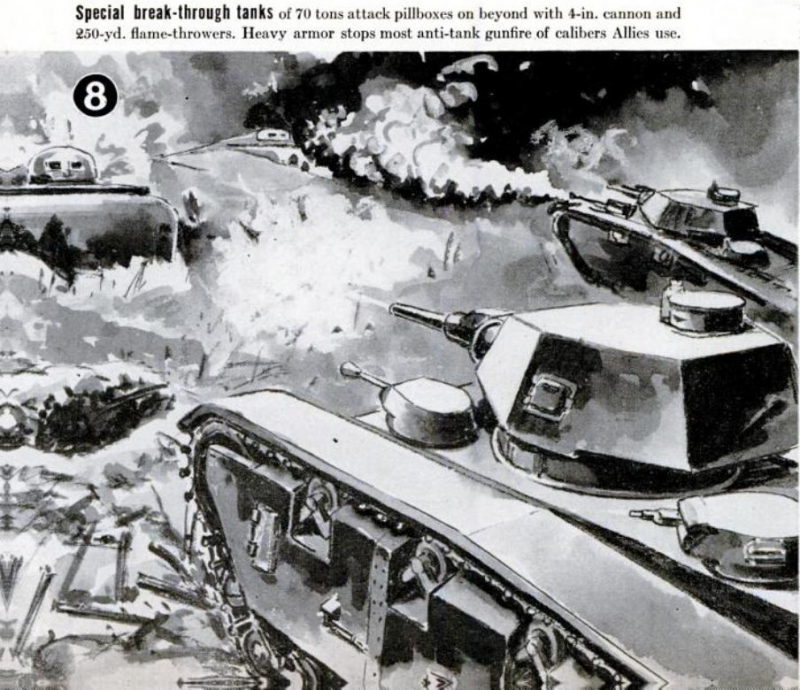
German propaganda in action: Behind the image of the mighty Rheinmetall breakthrough tank, weighing 70 tons, is an unsuccessful 23-ton tank with 13-20 mm armor. Illustration from an American magazine of those years
If the Germans adhered to the mentioned caliber classification, then even a 70-ton Tiger II with an 88-mm gun would be considered just a medium tank. However, this proposal was soon abandoned. Already on April 3, 1936, a new classification was published in the same reference book. In it, the Germans came to the usual notation of the form Panzerkampfwagen III (3.7 cm)) and Sd.Kfz.141and the old names are gone. Note that there is no mention of light, medium or heavy tanks here. And not only here. An analysis of the documents shows that the Germans usually mentioned tanks without any weight specification. There are no hints of classification by weight or caliber even in detailed specifications and reference manuals.
Perhaps German tanks were classified according to the types of tank units? Alas, this idea does not work. Before the start of World War II, the Germans combined in light tank companies (leichte Panzerkompanie) all available tanks, from Pz.Kpfw.I to Pz.Kpfw.IV. With the start of the war, light companies were reduced to one type, which included Pz.Kpfw.II and Pz.Kpfw.III. In addition to them, medium tank companies (mittlere Panzerkompanie) were created from Pz.Kpfw.II and Pz.Kpfw.IV. Of course, the Pz.Kpfw.II cannot be a light and medium tank at the same time!
Subtotals
Disputes about the German names of tanks, which from time to time arise on the Internet, surprise with their naivety, to say the least. The disputing parties, for example, are trying to find out whether the Pz.Kpfw.IV was considered a medium tank. This implies that the Germans divided tanks by weight and in this division there were medium tanks. Meanwhile, an analysis of the official designations shows that the Germans did not have any systematic classification of their tanks by weight at all.
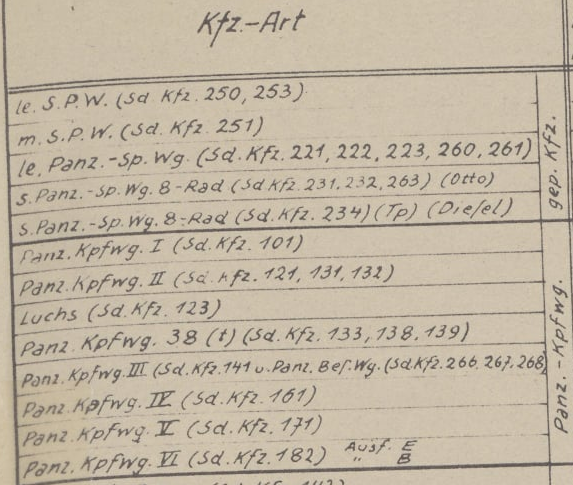
Lists of symbols from the reference table with fuel consumption for different cars. After light and heavy armored vehicles, as well as light and medium armored personnel carriers, tanks are listed. Just tanks. Source: Panzer Fakten
In different countries, tanks were designated differently, and the point was not that the Germans wrote Pz.Kpfw.I, but the British Mark I. The approaches to the compilation and use of designations themselves differed. The Germans were characterized by the following:
1. Lack of a unified classification. Different types of technology could be classified in different ways. Some cars were divided into light and heavy, others into light, medium and heavy, and still others were not indicated by weight at all.
2. Lack of uniform classification criteria. For example, Jagdpanther was called a heavy tank destroyer. On the same chassis, the Mittlerer Waffenträger SFH18 / Panther was designed - the medium carrier of the 150-mm gun. And the Panther tank itself was not called either medium or heavy.
3. Inconsistency in notation. Tank destroyers with closed cabins, conceived as assault guns, were divided into light and heavy. However, StuG III and StuG IV were not officially called light. And if StuG III, apparently, decided not to rename, then StuG IV appeared already with new designations.
4. Several designations of the same machine. It was common practice for the Germans to use several names in parallel. Sometimes story The renaming turned out to be very bizarre. For example, the strange name 8.8cm Sturmgeschütz 42 (Pz.Sfl.IVd) hides just a Jagdpanther.
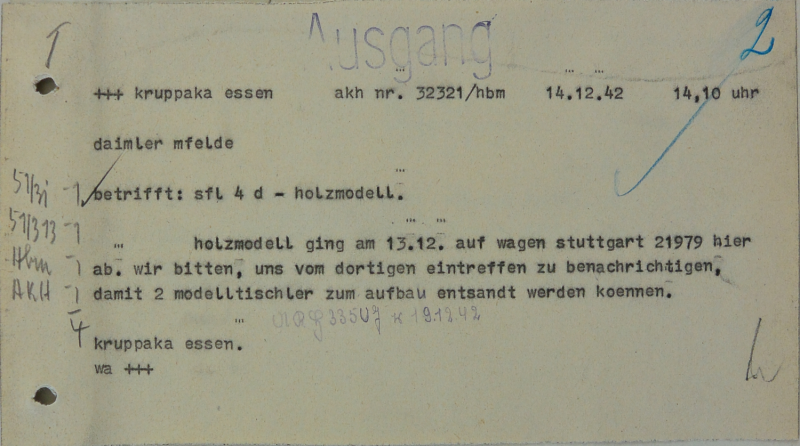
An example of abracadabra from the telegraph correspondence between Krupp and Daimler-Benz. The Sfl.IVd had nothing to do with the Pz.Kpfw.IV - we are talking about the future Jagdpanther based on the Pz.Kpfw.V. Source: BAMA
The Germans did not divide their tanks either by weight, or by caliber, or by organizational and staff structures. What happens, they did not have a tank classification at all? There is also such an opinion. The author believes that the Germans still had their own original classification. Its description, however, would require a separate article.
Sources:
*Bundesarchiv-Militaryarchiv
*Panzer Tracts
*For more on the evolution of tank designations see Panzer Tracts #3-2
Information